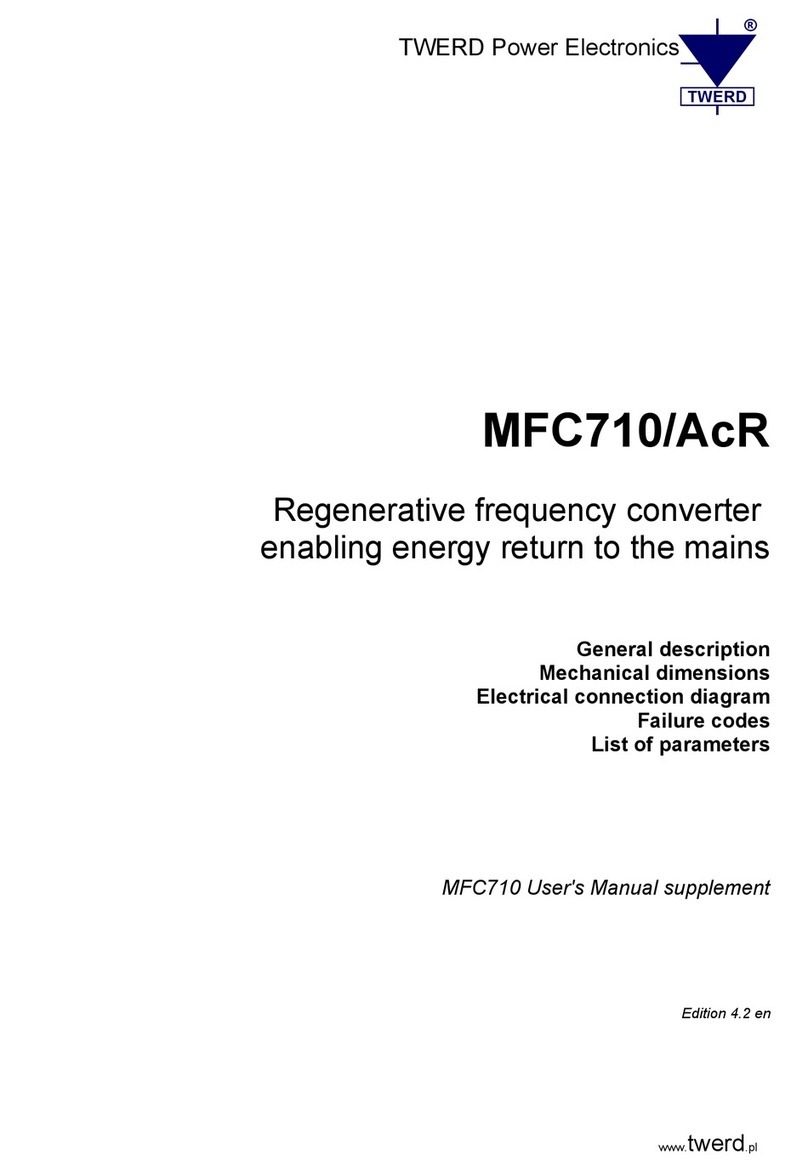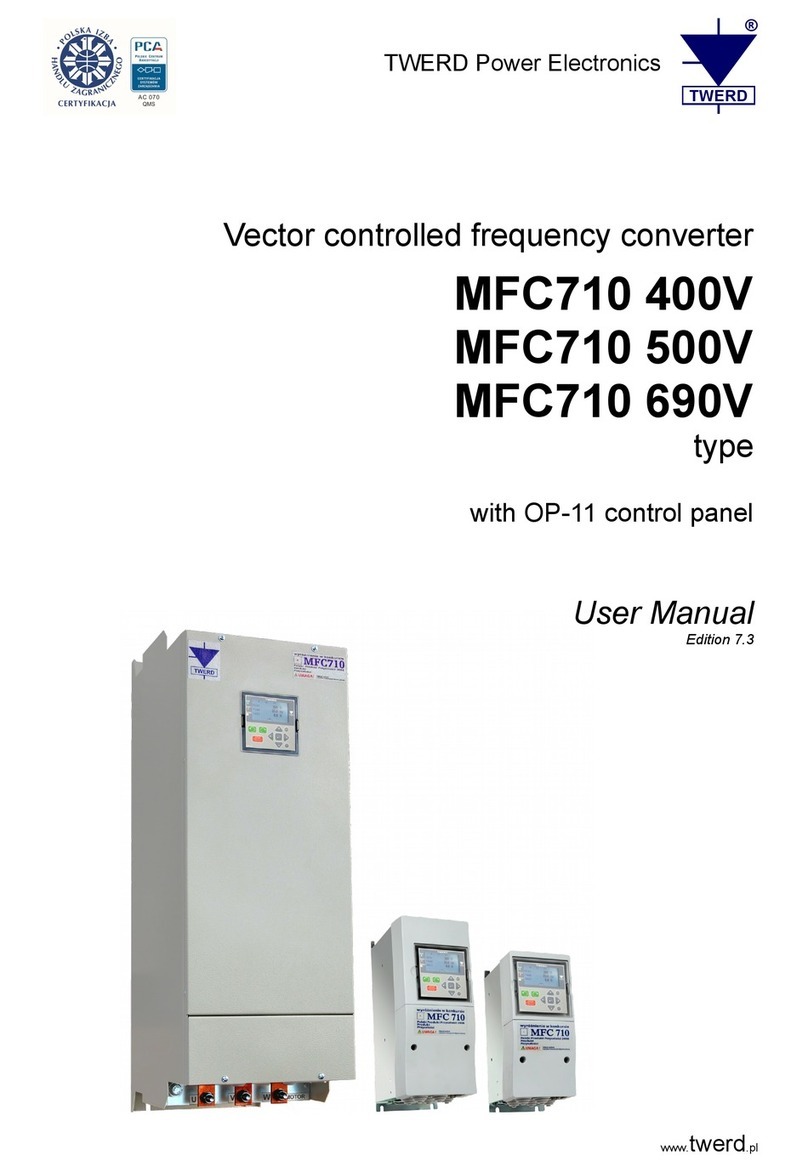Contents
Contents
Technical data of frequency converters AFC2 .............................................7
1. Conditions of safe operation........................................................................9
1.1. Threats and warnings...........................................................................9
1.2. Basic rules.......................................................................................... 1
1.3. Operation list......................................................................................1
1.4. Disposal considerations.....................................................................1
1.5. Environmental conditions...................................................................11
1.6. Limits of responsibility........................................................................11
2. Installation of the frequency converter.......................................................12
2.1. Safety rules........................................................................................12
2.2. Assembly of the frequency converter.................................................14
2.3. Connecting the power circuit..............................................................16
2.4. Connection of control systems...........................................................17
2.5. Using contactors and circuit breakers at the frequency converter
output................................................................................................. 18
3. The control panel.......................................................................................19
4. The first start............................................................................................. 24
4.1. Power circuit connection....................................................................24
4.2. Entering nominal data........................................................................24
5. Configuration of the frequency converter..................................................25
5.1. Control from the control panel............................................................26
5.2. Control from the terminal block..........................................................26
5.3. Shaping the drive dynamics...............................................................29
5.4. Operation in U/f scalar modes............................................................29
5.5. Operation in vector mode...................................................................3
5.6. Analogue inputs.................................................................................31
5.7. Analog output.....................................................................................34
5.8. Constant speeds operation................................................................35
5.9. Motopotentiometer.............................................................................38
5.1 . Elimination of frequencies................................................................4
5.11. Electric motor rotation direction lock.................................................41
5.12. Thermal protections of the motor - Protection by I2t limit..................41
5.13. Operating at frequencies exceeding 5 Hz......................................43
6. PI controller...............................................................................................44
6.1. Turning on and configuration of the PI controller................................44
7. Frequency converter control via RS-485 communication link....................46
7.1. Parameters regarding communication via RS-485.............................47
7.2. Map of registers accessible through RS-485 link...............................48
7.3. Handling communication errors..........................................................51
8. Failures and warnings...............................................................................51
8.1. Messages on failures and warnings on the control panel...................51
8.2. Deleting failure message....................................................................52
TWERD Power Electronics 5






























